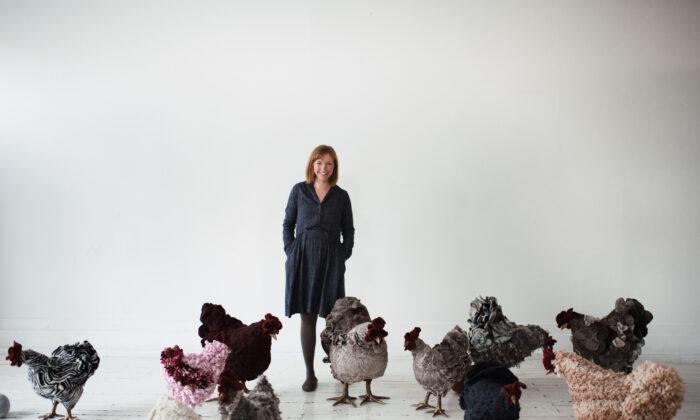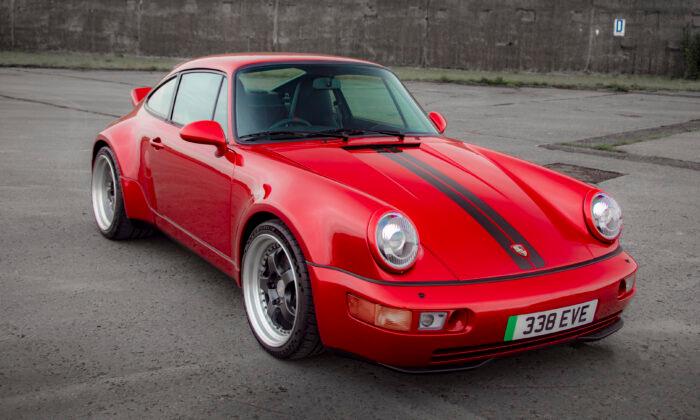Colors and skin tone can be tricky to match. That is why celebrities work with stylists: they are experts, and if you get a good one, chances are you’re less likely to commit a color faux pas.
But for those of us without personal stylists, doing a simple self-color analysis can help.
According to color analysis, based on your skin tone, eye color, and hair color, some colors make your complexion look brighter and healthier, while others make you look sad and tired. Color analysis also categorizes you into a season—spring, summer, autumn, or winter—with a corresponding ideal color palette.
Now that I have your attention, here are some quick tests to do your own color analysis. We will determine if your skin tone is warm or cool, find your season, and look at which colors you should favor to highlight your inner and outer beauty.
Is Your Skin Tone Warm or Cool?
Check Your VeinsFirst test: Look at your wrist and check what color your veins are. If they are purple or blue, your complexion is cool; if they are more olive or green, your complexion is warm.
You may find it difficult to distinguish the color of your veins if they fall between blue and green. If so, you have a neutral complexion.
Use Your Jewelry
The second test is to try on silver and gold jewelry. Wear earrings or a necklace, something close to your face, and look in the mirror to observe which metal makes your complexion and your eyes brighter. If it’s silver, you have a cool complexion, and if it’s gold, you have a warm complexion.

Check whether you look better in gold or silver. Von ShotPrime Studio/Shutterstock
White Paper
Just to be sure, let’s do a final test. Take a blank sheet of white paper, and place it close to your neck or chest. Then compare your skin to the white surface. If your skin looks yellowish or green, you are on the warm side. If your skin appears rosy or blue, you’re on the cool side. Finally, if your skin looks ashy or gray, you are neutral.
Which Season Are You?
Now, let’s find your season. If your complexion is warm, you could be a spring or autumn lady, and if it’s cool, you might be a winter or summer lady. To find out which season you are, we need to take into consideration your skin tone and the color of your hair and eyes.Spring
Hair: blond, with variations of light blond, golden, light red, or light auburn.
Many Ngom
Skin tone: ivory, peach, golden, or yellow.
Eyes: green, golden, steel blue, blue, amber, or light brown.
Best colors: warm and soft colors, such as golden yellow, pistachio, apple green, coral, ivory, classic blue, light blue, orange, and off-white.
Best jewelry: gold.
Colors to avoid: electric blue, wine, white, black, and harsh colors in general.

Frazer Harrison/Getty Images; Dimitrios Kambouris/Getty Images
Example: Emma Stone
A light golden dress enhances Emma Stone’s hair and skin complexion. The whole picture is well-balanced; she is glowing and you can sense she is comfortable. On the other hand, when she wears contrasting colors like this black and white top, it diminishes her tone and her skin looks dull. Even the green eyeshadow isn’t enough to help.Summer
Hair: blond, sometimes platinum blond, light or dark gray (almost ashy), chestnut or brown chestnut, silver gray, or white.
Many Ngom
Skin tone: milky white and rosy, almost like a porcelain tone, very pale, or very light ivory.
Eyes: very intense blue, green, light gray, gray or between green and gray, chestnut, or black.
Best colors: Kelly green, cold and light tones such as raspberry, off-white, blue-gray, light gray, dusty pink, turquoise, and fuchsia.
Best jewelry: silver.
Colors to avoid: bold warm colors, such as bright orange.

Jeff Spicer/Getty Images; Brendon Thorne/Getty Images
Example: Cate Blanchett
When Cate Blanchett wears green, it gives her brighter, healthy-looking skin with minimal makeup. In bold orange, her whole complexion looks faded, and her face blends in with her dress so that all you see is one color: orange.Autumn
Hair: auburn, red, bright red, salt and pepper, warm brown, or dark brown.
Many Ngom
Skin tone: rosy, golden, peach, bronze, or very dark bronze.
Eyes: usually brown, though they can also be light blue or green.
Best colors: warm and rich, like rusty orange, paprika, saffron, brick, caramel, khaki, and bronze.
Best jewelry: golden yellow
Colors to avoid: black, dark navy, and cool colors.

Matt Winkelmeyer/Getty Images for Critics Choice Association; Rich Fury/Getty Images
Example: Lupita Nyong'o
The best colors for the autumn lady are earthy tones—tones that connect with nature. The difference is very obvious on Lupita Nyong'o. Her skin gets an instant glow with a rich brown dress and gold accessories, while black makes her skin look dull.Winter
Hair: dark brown, black (possibly with a blue tone, like a dark indigo).
Many Ngom
Skin tone: can range from very pale and matte, to rosy with bluish undertones, to light olive or even very dark.
Eyes: blue, green, brown, black, or gray.
Best colors: The winter lady is versatile and can switch from warm tones such as peach, brown, and yellow; to dark navy, fuchsia, and purple; to even bright white, winter green, and royal blue.
Best jewelry: silver and white gold.
Colors to avoid: pastels and washed-out colors.

Jason Kempin/Getty Images; John Phillips/Getty Images for BFI
Example: Rooney Mara
Rooney Mara has porcelain skin with dark, contrasting hair. When she wears clothes that are similarly dark and contrasting, her clothes and hair frame her face, highlighting that beautiful porcelain skin. But when she tries to wear pastels or nude tones, she loses her glow and all you see is her dark hair and lipstick.For Men, Consider Contrast
Color analysis is simpler for men because there is no make-up and barely any jewelry involved. The focus will be on the contrast between your skin tone, hair color, and eye color, and making sure they are in harmony with the colors of your clothes.High Contrast
Men with light, fair skin and dark brown or black hair fall in the high-contrast category. Like winter ladies, these men should wear darker suits in dark navy, black, or charcoal, with a white shirt and a dark tie. The goal is to frame and draw attention to the face.Joseph Gordon-Levitt is in this category. Look at the difference between these two outfits: When he wears a light suit with a white shirt, everything is light, making his skin look dull. But when he wears a darker suit, it contrasts nicely with his shirt and fair skin, which drives the attention to his face and makes him look healthier.

Neilson Barnard/Getty Images; Alberto E. Rodriguez/Getty Images
Medium Contrast
The majority of men fall into this category: skin that is not too pale, nor not too dark, and hair that is dark, but not as dark as the high-contrast category. Men in this category have more flexibility when it comes to colors. Choose clothes in medium tones—not too pale, not too dark—but not similar to your skin tone.Ryan Gosling is our model in this category, as his skin is in the medium range—slightly tanned—and his eyes are medium blue, neither very pale nor intense. He looks much better in a classic blue suit than in a black suit, which is too dark. When he wears a suit in a color too similar to his skin tone, it doesn’t look attractive; in that photo, all you see is the pattern on his sweater.

Emma McIntyre/Getty Images; Pascal Le Segretain/Getty Images
Muted Contrast
Those with blond, red, salt-and-pepper, gray, or platinum hair fall into the muted-contrast category. I recommend they wear light gray suits with neutral colors and white shirts, to minimize the contrast between the clothes and hair and let the face be the focus.Let’s take Patrick Dempsey, for example. When he wears a dark suit, all you see is the suit. But when he wears a gray suit, which matches his hair, you get to see his glowing skin.

Rodin Eckenroth/Getty Images; Pascal Le Segretain/Getty Images





